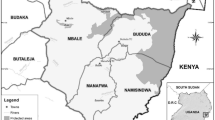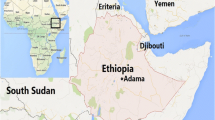Abstract
Rooftop rainwater harvesting systems for human consumption represent an alternative among individual technologies of water supply. However, this solution should not be treated exclusively as an emergency and pro-poor alternative when it is applied in the form of public policy intended for supplying water to rural populations of semi-arid regions. By aiming at the assessment of the role that this type of solution represents for rural populations, this study evaluates the Brazilian rainwater harvesting program which has already constructed 372,000 cisterns with a storage capacity of 16 m2 of water. A survey covering 623 beneficiaries of this program in 68 municipalities located across the state of Minas Gerais revealed that obstacles in terms of the articulation of water supply and health programs remain for the success of the program. In addition, the adoption of appropriate practices involved in the handling of the different components of the program depends on improving the awareness among the beneficiaries. This represents one of the major challenges for the effectiveness of the program. The present study indicates that the precarious living conditions of the population who beneficiates from the Brazilian rainwater harvesting program impose a major challenge to the overall effectiveness of the program and increases the level of involvement and responsibility on the part of the government.






Similar content being viewed by others
References
Aladenola OO, Adeboye OB (2010) Assessing the potential for rainwater harvesting. Water Resour Manage 24:2129–2137. doi:10.1007/s11269-009-9542-y
Al-Salaymeh A, Al-Khatib IA, Arafat HA (2011) Towards sustainable water quality: management of rainwater harvesting cisterns in southern Palestine. Water Resour Manage 25:1721–1736. doi:10.1007/s11269-010-9771-0
Arruda-D’Alva O, Farias LOP (2008) Cisterns program: a study on the demand, coverage and focus. Journal of Studies. Social development under debate. Number 7. Ministry of Social Development and Combating Hunger, Secretariat of Evaluation and Management. Brasilia
ASA Semi-Arid Articulation (2012) The one million cisterns program. Available at: http://www.asabrasil.org.br/portal/Default.asp Accessed 5 January 2012
Australian Government - Department of Health And Ageing (2004) Guidance on use of rainwater tanks. 2004. 2nd edn. Canberra. Available at: http://enhealth.nphp.gov.au/council/pubs/pdf/rainwater_tanks.pdf. Accessed 30 May 2011
Babbie E (1999) Survey research methods. Editora UFMG, Belo Horizonte
Baguma D, Loiskandl W, Jung H (2010) Water management, rainwater harvesting and predictive variables in rural householsds. Water Resour Manage 24:3333–3348. doi:10.1007/s11269-010-9609-9
Coombes P, Kuczera G (2003) Analysis of the performance of rainwater tanks in Australian capital cities. In: Proceedings of the 28th International hydrology and water resources symposium. Wollongong, New South Wales, Australia
Domènech L (2011) decentralized water management: Household use of rainwater and greywater in Spain and Nepal. Thesis, Universitat Autònoma de Barcelona
Fewkes A (1999) The use of rainwater for WC flushing: the field testing of a collection system. Build Environ 34(6):765–772
Fewkes A (2000) Modelling the performance of rainwater collection systems: towards a generalised approach. Urban Water 1(4):323–333
Fewkes A (2006) The technology, design and utility of rainwater catchment systems. In: Butler D, Memon FA (eds) Water demand management. IWA Publishing, London
Fonseca J, Silva CV, Pensa JL, Heller L (2011) The presence of rainwater harvesting systems has favored the consumption of water with a better bacteriological quality for rural households? In: Proceedings of the 26th Brazilian sanitary and environmental engineering congress, Porto Alegre, Brazil
Gould J (1999) Is rainwater safe to drink? A review of recent findings. In: Proceedings of 9th international conference on rain water catchment systems, Pretrolina, Brazil
Guardian (2012) Brazil overtakes UK as sixth-largest economy. http://www.guardian.co.uk/business/2011/dec/26/brazil-overtakes-uk-economy. Accessed 15 January 2012.
Heyworth JS, GlonekG MEJ, Baghurst PA, Finlay-Jones J (2006) Consumption of untreated tank rainwater and gastroenteritis among young children in South Australia. Int J Epidemiol 35(4):1051–1058
IBGE. Brazilian Institute of Geography and Statistics (2010) Demographic Census 2010. http://www.ibge.gov.br/home/estatistica/populacao/censo2010/default.shtm. Accessed 10 May 2011.
Ishaku HT, Majid MR, Johar F (2012) Rainwater harvesting: an alternative to safe water supply in Nigerian Rural Communities. Water Resour Manage 26:295–305. doi:10.1007/s11269-011-9918-7
Islam MD, Chou F, Kabir M, Liaw C (2010) Rainwater: a potential alternative source for scarce safe drinking and arsenic contaminated water in Bangladesh. Water Resour Manage 24:3987–4008. doi:10.1007/s11269-010-9643-7
Kahinda JM, Taigbenu AE, Boroto JR (2007) Domestic rainwater harvesting to improve water supply in rural South Africa. Phys Chem Earth 32:1050–1057
Koplan JP, Doug R, Deen R, Swanston WH, Tota B (1978) Contaminated roof-collected rainwater as a possible cause of an outbreak of Salmonellosis. J Hyg 81:303–309
Lye D (2002) Health risks associated with consumption of untreated water from household roof catchment systems. J Am Water Resour Assoc 38:1301–1306
Lye D (2009) Rooftop runoff as a source of contamination: a review. Sci Tot Env 407:5429–5434
Martinson DB, Thomas TH (2003) Improving water quality by design. In: Proceedings 11th international conference on rain water catchment systems, Mexico City, Mexico
Martinson DB (2007) Improving the viability of roofwater harvesting in low-income countries. Thesis, University of Warwick
Marcynuk P et al (2009) Preliminary summary: prevalence of diarrhea among cistern and non cistern users in Northeast Brazil and further risk factors and prevention strategies. In: Proceedings of the VII Brazilian symposium of catchment and management of rainwater, Caruaru, Brazil
Pandey DN, Gupta AK, Anderson DM (2003) Rainwater harvesting as an adaptation to climate change. Curr Sci 85:46–59
Pinfold JV, Horan NJ, Wirojanagud W, Mara D (1993) The bacteriological quality of rain jar water in rural northeast Thailand. Water Resour 27(2):297–302
SIGA/ASA. Management and Auditing System of P1MC (2010) A list of beneficiaries of P1MC. 2010. Available at: http://aplicacoes3.mds.gov.br/cisternas/. Accessed 10 January 2010
Silva CV (2006) Quality of rainwater stored in cistern for human consumption case study in Araçuaí, Minas Gerais. Dissertation, Universidade Federal de Minas Gerais
Simmons G, Hope V, Lewis V, Whitmore J, Gao W (2001) Contamination of potable roof-collected rainwater in Auckland, New Zealand. Water Resour 35:1518–1524
Simmons G, Smith G (1997) Roof water probable source of Salmonella infections. Public Health Report 4:5
Sturm M, Zimmermann M, Schütz K, Urban W, Hartung H (2009) Rainwater harvesting as an alternative water resource in rural sites in central northern Namibia. Phys Chem Earth 34:776–785
Tavares AC (2009) Physical, chemical and microbiological aspects of water stored in cisterns of rural communities in semi-arid of Paraiba. Dissertation, Universidade Estadual da Paraíba
Triola MF (1999) An introduction to statistics. LTC S.A., Rio de Janeiro
UNEP (2009) Rainwater harvesting: a lifeline for human well-being. A report prepared for UNEP by the Stockholm Environment Institute
UN-HABITAT (2005) Blue drop series on rainwater harvesting and utilisation. Project managers & Implementing agencies. Available at http://www.hpscste.gov.in/rwh/2060_alt.pdf. Accessed 20 May 2011
Zhu K, Zhang L, Hart W, Liu M, Chen H (2004) Quality issues in harvested rainwater in arid and semi-arid Loess Plateau of northern China. J Arid Environ 57:487–505
Yaziz MI, Gunting H, Sapari N, Ghazali AW (1989) Variations in rainwater quality from roof catchments. Water Resour 23:761–765
Ward S, Memon FA, Butler D (2010) Rainwater harvesting: model-based design evaluation. Water Sci Technol 61:85–96
WHO (2003) Domestic water quantity, service level and health. Geneva, Switzerland. http://www.who.int/water_sanitation_health/diseases/WSH03.02.pdf. Accessed 05 January 2009
Acknowledgements
We would like to thank the National Council for Scientific and Technological Development (CNPq) for the financial support to this study.
Author information
Authors and Affiliations
Corresponding author
Rights and permissions
About this article
Cite this article
Gomes, U.A.F., Heller, L. & Pena, J.L. A National Program for Large Scale Rainwater Harvesting: An Individual or Public Responsibility?. Water Resour Manage 26, 2703–2714 (2012). https://doi.org/10.1007/s11269-012-0041-1
Received:
Accepted:
Published:
Issue Date:
DOI: https://doi.org/10.1007/s11269-012-0041-1




